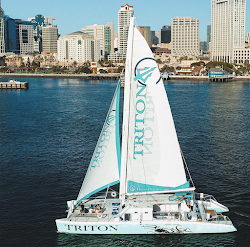Waymo has deployed a small fleet of all-electric Jaguar I-PACEs outfitted with its latest autonomous driving systems in select neighborhoods across the city. This initiative is part of Waymo's broader effort to improve its artificial intelligence and sensor technology by operating in new and diverse environments.
The test vehicles, which are manually operated by human drivers, will be used to collect data on traffic patterns, pedestrian behavior, and unique regional driving habits. This information is crucial for refining the software's ability to navigate complex urban settings. Some of the areas in which Waymo's test vehicles have been spotted include Bankers Hill, Mission Hills, Little Italy, Balboa Park, Cortez Hill, East Village, the Marina District, and Sherman Heights. The company is also running tests on major roadways such as Interstate 5 and State Route 163.
Waymo has confirmed that these tests are not necessarily an indication of an imminent commercial robotaxi service launch in San Diego. Instead, they are part of a broader expansion of its testing program, which also includes deployments in Las Vegas and other yet-to-be-disclosed cities. The goal is to expose the company's self-driving systems to a variety of urban environments to improve their performance in real-world scenarios.
Waymo traces its origins back to Google's self-driving car project, which was launched in 2009. The initiative was one of the earliest large-scale efforts to develop autonomous vehicle technology and played a significant role in shaping the modern landscape of self-driving research and development. In 2016, the project was rebranded as Waymo, becoming a standalone subsidiary under Google's parent company, Alphabet Inc.
The company’s technology relies on a combination of LiDAR (light detection and ranging), cameras, radar, and advanced machine learning algorithms. These systems work together to create a high-definition 3D map of the vehicle’s surroundings, allowing the AI to detect and respond to pedestrians, cyclists, traffic signals, and other vehicles in real time. Over the years, Waymo has continuously improved its software to handle increasingly complex urban driving conditions.
Waymo's first major commercial deployment took place in Phoenix, Arizona, where it launched its Waymo One robotaxi service in 2020. The company has since expanded its driverless operations to certain parts of San Francisco, Los Angeles, and Austin, Texas. In late 2023, Waymo announced plans to test its vehicles internationally for the first time in Tokyo and expand its U.S. robotaxi services to Miami.
The development and deployment of self-driving technology have not been without challenges. Safety remains a primary concern, as incidents involving autonomous vehicles have fueled skepticism among regulators and the public. Since 2014, California’s Department of Motor Vehicles has recorded hundreds of reports related to autonomous vehicle collisions, emphasizing the need for continued improvements in safety protocols and AI decision-making.
Additionally, the cost of developing self-driving technology has been a major hurdle. Several companies have exited the space due to financial losses, with General Motors-backed Cruise suspending its operations in December 2024 after facing mounting costs and regulatory scrutiny. Despite these setbacks, Waymo continues to push forward, leveraging its extensive testing data to refine its technology and make autonomous transportation more reliable.
Waymo's San Diego testing phase will play a critical role in shaping its future expansions. By analyzing traffic flow, pedestrian interactions, and local driving nuances, the company aims to adapt its autonomous vehicles to a wider range of environments. Whether or not San Diego eventually becomes one of Waymo’s official robotaxi cities, the testing efforts in the region mark another step in the ongoing evolution of self-driving technology.
For more information on Waymo, visit waymo.com.
Originally published on February 10, 2025.





















